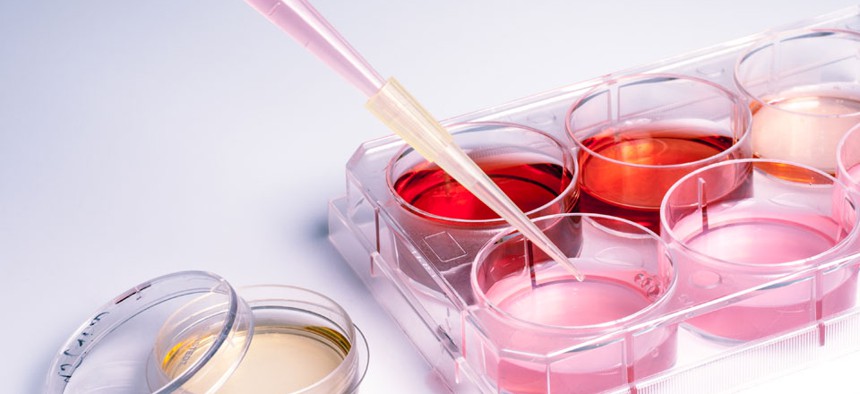The 10 Biggest Scientific Breakthroughs of 2013

Repina Valeriya/Shutterstock.com
From neuroscience to outer space, scientists churned out results with important implications for the future.
Now that the biggest political stories of the year have been ranked, inspected, and dissected, it's science's turn. Not all of the hundreds of thousands of research studies published this year produced far-reaching scientific breakthroughs, but a select few hold more promise than the rest.
Cancer research had the biggest year, according to the journal Science, which on Thursday released its list of the top 10 breakthroughs in scientific research of the year. Research several decades in the making on cancer immunotherapy, which targets the human immune system rather than tumors themselves, is finally producing promising results in clinical trials, the publication's announcement explains. The new treatments harness the power of the immune system by pushing T cells and other disease-fighting cells to attack tumors.
Cancer immunotherapy still has a ways to go until it reaches the hospital room. Right now, the treatment works only for some cancers and a few patients, but many cancer specialists are convinced that this is the start of a new, game-changing chapter in cancer research. So do a number of pharmaceutical companies, which have begun investing heavily in immunotherapy research.
Here are the rest of this year's biggest advances in research in the fields of …
Genetics. Discovered in bacteria, a gene-editing technique called CRISPR, which stands for Clustered Regularly Interspaced Short Palindromic Repeats, jumped to the operating table when researchers started using it to manipulate individual genes in the genomes of plant, animal, and human cells.
Alternative energy. A new kind of solar-cell material, called Perovskite cells, garnered attention because they are cheaper and easier to produce than what's inside traditional silicon cells. They're not yet as efficient as commercial solar cells, but once refined they could work twice as better.
Biology. Scientists used the structure of an antibody to design an immunogen, the main ingredient of vaccines, for a respiratory virus that sends millions of children younger than 5 to the hospital each year.
Neuroscience. A new imaging technique changed the way researchers studied the brain by rendering brain tissue transparent, making neurons and other types of cells more visible than ever before. The Stanford-developed technology, known as CLARITY, allows scientists to see a fully intact brain and its complex structures in all their three-dimensional glory. Many experiments on postmortem brains require cutting or slicing the organ to get a better look.
Anatomy. Researchers probably weren't following the trend of creating miniature versions of everything, like teacup pigs, but they succeeded in growing mini-human-like "organoids" in vitro. The small organs, including liver buds, kidneys, and even brains, provide better models for studying human disease than their animal equivalents.
Space. After a century of speculation, scientists finally confirmed that cosmic rays, high-energy particles that can reach Earth from anywhere in space, originate from debris clouds left behind by exploding stars, called supernovae. Fun fact: Cosmic rays can shoot protons through space at energies thousands of times greater than those in the most powerful particle accelerator on Earth.
Stem cells. Researchers successfully derived stem cells from cloned human embryos. The key to this achievement was hiding just inside our coffee mugs: caffeine. The drug stabilized molecules in delicate human egg cells, allowing scientists to carefully extract stem cells.
Sleep. Mice studies revealed that the brain "cleans" itself much more efficiently after bedtime. During sleep, the organ expands the channels between neurons, which allows more cerebrospinal fluid, a colorless, protective fluid that cushions the brain inside the skull, to flow through. This helps the brain restore and repair itself after a hard day's work of being awake. Moral of the study: Sleep is good for you.
Microbiology. Scientists concluded that humans can thank the old adage of "the whole is greater than the sum of its parts" for their well-being. Research on the trillions of bacterial cells that call the human body home revealed the crucial roles tiny microbes play in keeping us healthy. Turns out that microorganisms, the majority of which were labeled enemies of health and targeted for destruction, are actually our friends.
(Image via Repina Valeriya//Shutterstock.com)
NEXT STORY: Why Aren’t More Feds Teleworking?



